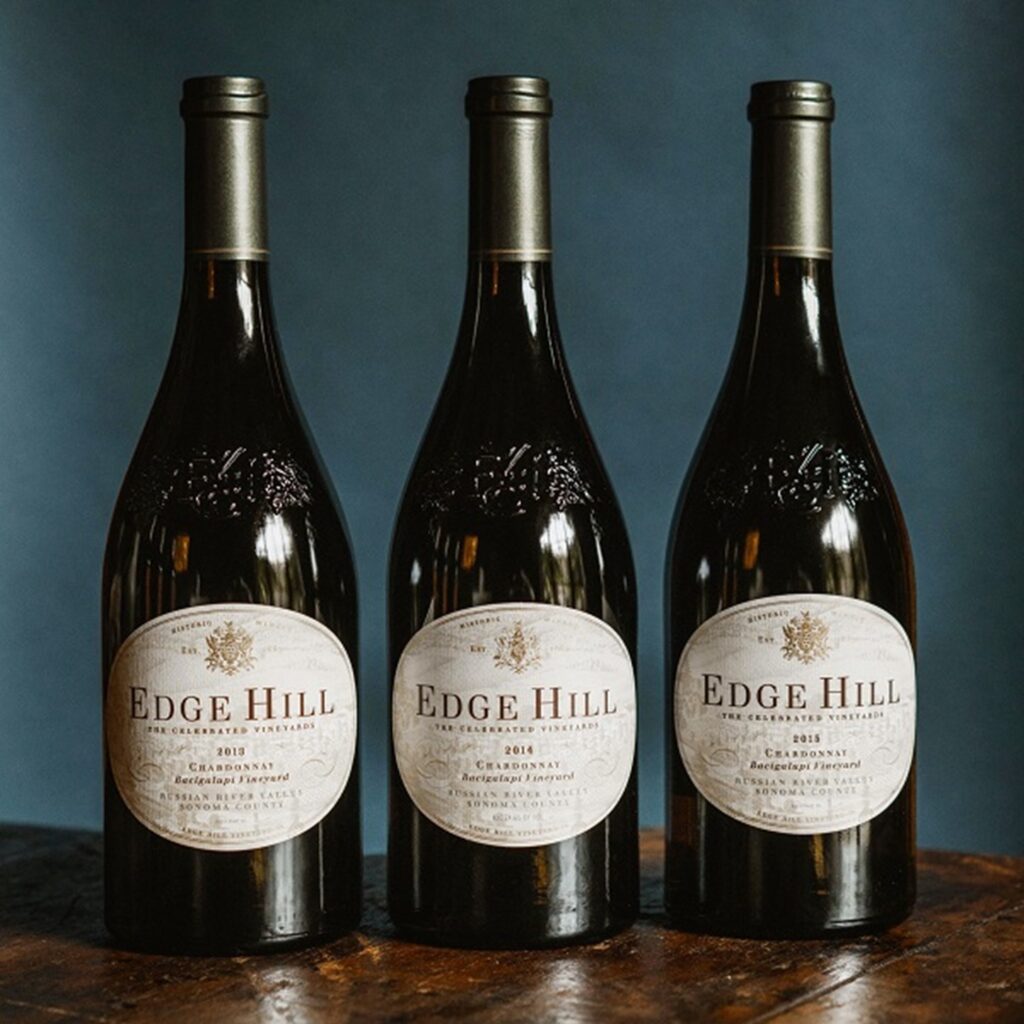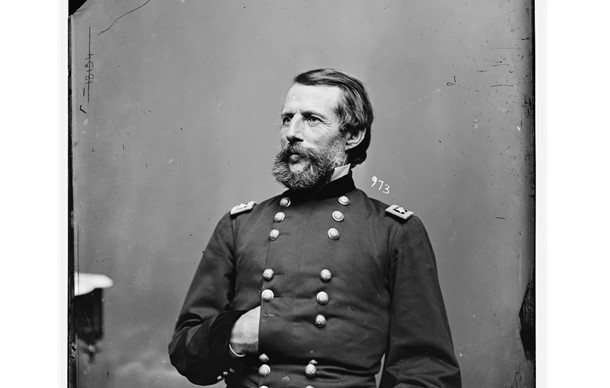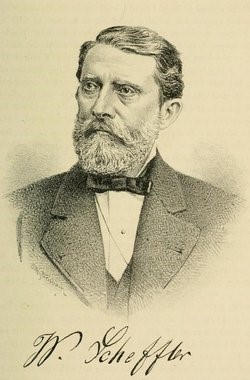Table of Contents

In part one of this series, we examined the Civil War connection to Inglenook Winery. Yet another Napa Valley winery with close ties to the Civil War is the Edge Hill Winery, founded by General Erasmus D. Keyes who had served in commanding positions at well-known battles such as First Bull Run, Seven Pines, and Gettysburg.[1] The winery would later pass through the hands of General Richard W. Heath and Captain William Scheffler who were also Civil War military men.[2]

Erasmus D. Keyes had a mixed career while serving in the military. Although he received various promotions-one of which was recommended by President Lincoln himself, he was also criticized for his actions at Gettysburg under the command of General John Adams Dix.[3] A native of New England, Keyes was West Point-trained, graduating at the top of his class in 1832. After graduation, Keyes was promoted to the rank of second lieutenant and hired as aide-de-camp for War- of- 1812 -hero General Winfield Scott. The two formed a close friendship that would last for the next two decades. From 1844 until 1848, Keyes served as an instructor of artillery and cavalry at West Point, avoiding combat in the Mexican War. Keyes’ first taste of the West Coast came in 1849 when he served on frontier duty in California. He spent the next decade “alternating between garrison duties in San Francisco and campaigning against American Indians in the Washington Territory.”[4] In the late 1850’s, Winfield Scott had become the General-in-Chief of the Army and recalled Keyes to serve as his secretary. Keyes first entered combat when leading the 1st Brigade of the 1st Division of the Army of Northeastern Virginia at the First Battle of Bull Run.[5] Keyes showed promise as a commander- saving more than two-hundred wagons full of supplies that would otherwise have been confiscated by the Confederate army.[6] The loss of Bull Run initiated what was to become a constant reorganization of the Union army. President Lincoln himself issued an order in March 1862 naming Keyes as a corps leader for the Army of the Potomac.[7] During the Peninsula Campaign, Keyes led the 4th Corps in several major battles including the Siege of Yorktown, the Battle of Seven Pines (Fair Oaks), the Battle of Savage’s Station, and the Battle of Malvern Hill. For his “Gallant and Meritorious Conduct in the Battle of Fair Oaks, Va,” Keyes was promoted to brigadier general in May and then again to major general of the volunteer army a few months later.[8]
Unfortunately, these early years marked the high point of Erasmus Keyes’ military career. During the Gettysburg Campaign, General John Adams Dix was ordered by General-in-chief Henry Halleck to move toward Richmond. His hope was that this would deter General Robert E. Lee from sending reinforcements to the Army of Northern Virginia in Pennsylvania. As Dix planned the offensive, he ordered Keyes to “attack Bottoms Bridge as a diversion.”[9] Unlike his previous actions, Keyes advanced quite slowly and failed to take the bridge despite having a numerical advantage. After several days with no advancement, Keyes was ordered to withdraw. His rearguard was attacked by the Richmond garrison during the retreat. Dix, blaming Keyes for his failure to threaten Richmond, asked that Keyes be removed from command.[10] In August 1863, the War Department discontinued the 4th Corps and Keyes, with no one to command, resorted to administrative tasks. Keyes chose to resign from the military in May 1864 after it became clear he would not be given another Corps to command.

Moving back to the West Coast, Keyes began the Edge Hill winery- the oldest three-level gravity-fed winery in the Napa Valley.[11] In 1867, General Keyes purchased 1500 acres of land near the Mayacamas mountains in St. Helena and began to plant grapes.[12] The winery’s first vintage was released that same year. At the time, Edge Hill had the largest storage capacity of any winery in the Napa Valley with the capacity to store 100,000 gallons of wine.[13] However, Keyes did not keep Edge Hill for long. In 1872, Keyes sold it to Richard W. Heath, a major general of the state militia.[14] After Heath´s death, the winery was sold to Captain William Scheffler, the former aide-de-camp to President Lincoln. Scheffler, a Prussian immigrant, served as part of Major General N.P. Banks’ staff.[15] During this time, Scheffler participated in the battles of Winchester, Cedar Mountain, and Antietam.[16] After the Civil War, like many veterans, Scheffler moved westward. After acquiring Edge Hill, Scheffler upgraded the winery, building a fermentation house, planting thirty-five more acres, and increasing the storage capacity to 125,000 gallons.[17] Unfortunately, Scheffler spent funds he did not have to remodel the winery, and in 1886 the winery was turned over to the Edge Hill Vineyard Association.[18] The main stockholders of the association eventually expanded the property to include 150 acres of vines, a distillery, and a storage capacity of 250,000 gallons. The winery continued to change owners until Prohibition when it was effectively shut down.
For the next 80 years, the winery served as a private residence. Wine production was only restarted in 2000 when Leslie Rudd acquired the property.[19] Rudd replanted several red varietals and began restoration of the winery. However, the Edge Hill wines made during this time were not produced on the original property. In 2022, Edge Hill was sold to the Gott family, and in 2023, the first Edge Hill vintage was made on the property since Prohibition began.[20]
Be sure to check out part three of this series, which will feature another winery with Civil War connections.
About the Author
Elizabeth Eisenstark first joined the Museum as a volunteer and is now on staff as Research and Collections Assistant. Elizabeth is a native Californian and graduated from the University of California Santa Cruz with a degree in History of Art and Visual Culture. She has previously worked in the Due Diligence industry—doing detailed background checks on companies and employees. Elizabeth enjoys sewing, rescuing rabbits, and spending time with her four tarantulas. The Museum caught her interest from a researcher’s standpoint, and she enjoys working with the staff and learning something new every day.
Sources
[1] Searles, Harry. “Erasmus D. Keyes, Biography, Significance, Officer, Civil War.” American History Central, R.Squared Communications, LLC, 11 Aug. 2023, www.americanhistorycentral.com/entries/erasmus-darwin-keyes/.
[2] Peninou, Ernest P. A History of the Napa Viticultural District, www.waywardtendrils.com/pdfs/napa.pdf. Accessed 28 Dec. 2023.
[3] Searles, Harry. “Erasmus D. Keyes, Biography, Significance, Officer, Civil War.” American History Central, R.Squared Communications, LLC, 11 Aug. 2023, www.americanhistorycentral.com/entries/erasmus-darwin-keyes/.
[4] Ibid.
[5] Ibid.
[6] Ibid.
[7] Ibid.
[8] Ibid.
[9] Ibid.
[10] Ibid.
[11] Worobiec, MaryAnn. “Exclusive: Joel Gott Wines Buys Napa’s Historic Edge Hill Winery.” Wine Spectator, Wine Spectator, 31 Jan. 2022, www.winespectator.com/articles/joel-gott-wines-buys-napa-s-historic-edge-hill-winery.
[12] “Edge Hill Wines.” The Napa Wine Project, www.napawineproject.com/edge-hill/. Accessed 28 Dec. 2023.
[13] Peninou, Ernest P. A History of the Napa Viticultural District, www.waywardtendrils.com/pdfs/napa.pdf. Accessed 28 Dec. 2023.
[14] Ibid.
[15] “Capt William Scheffler (1822-1893) – Find a Grave…” Find a Grave, www.findagrave.com/memorial/3541182/william-scheffler. Accessed 28 Dec. 2023.
[16] Ibid.
[17] Ibid.
[18] Ibid.
[19] “Edge Hill Wines.” The Napa Wine Project, www.napawineproject.com/edge-hill/. Accessed 28 Dec. 2023.
[20] Ibid.


